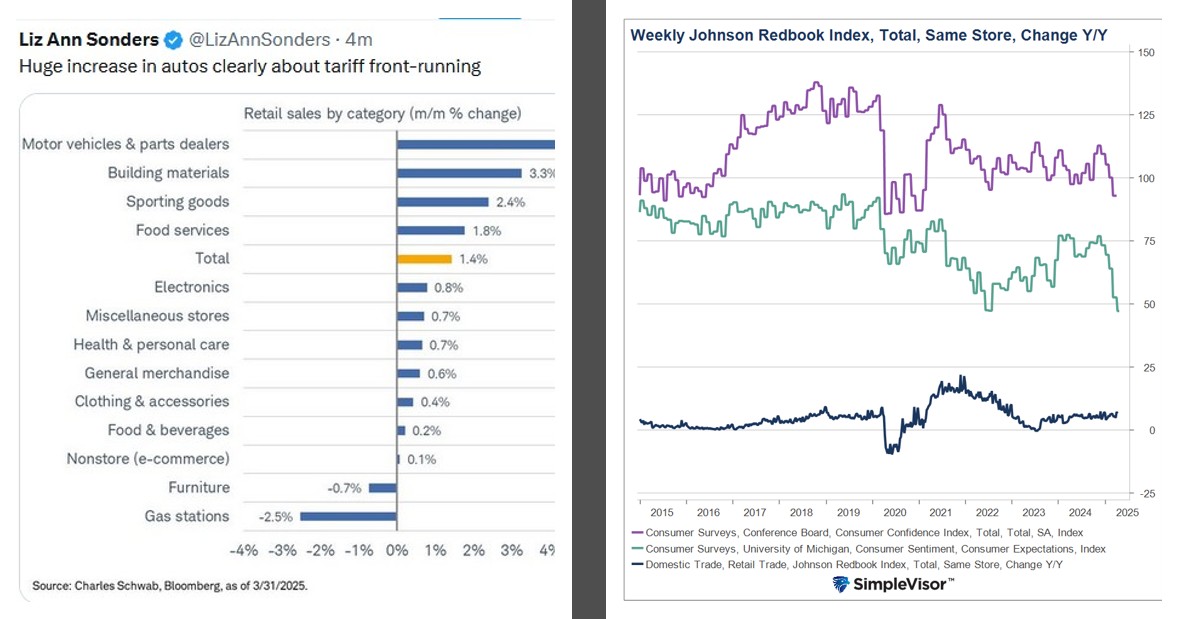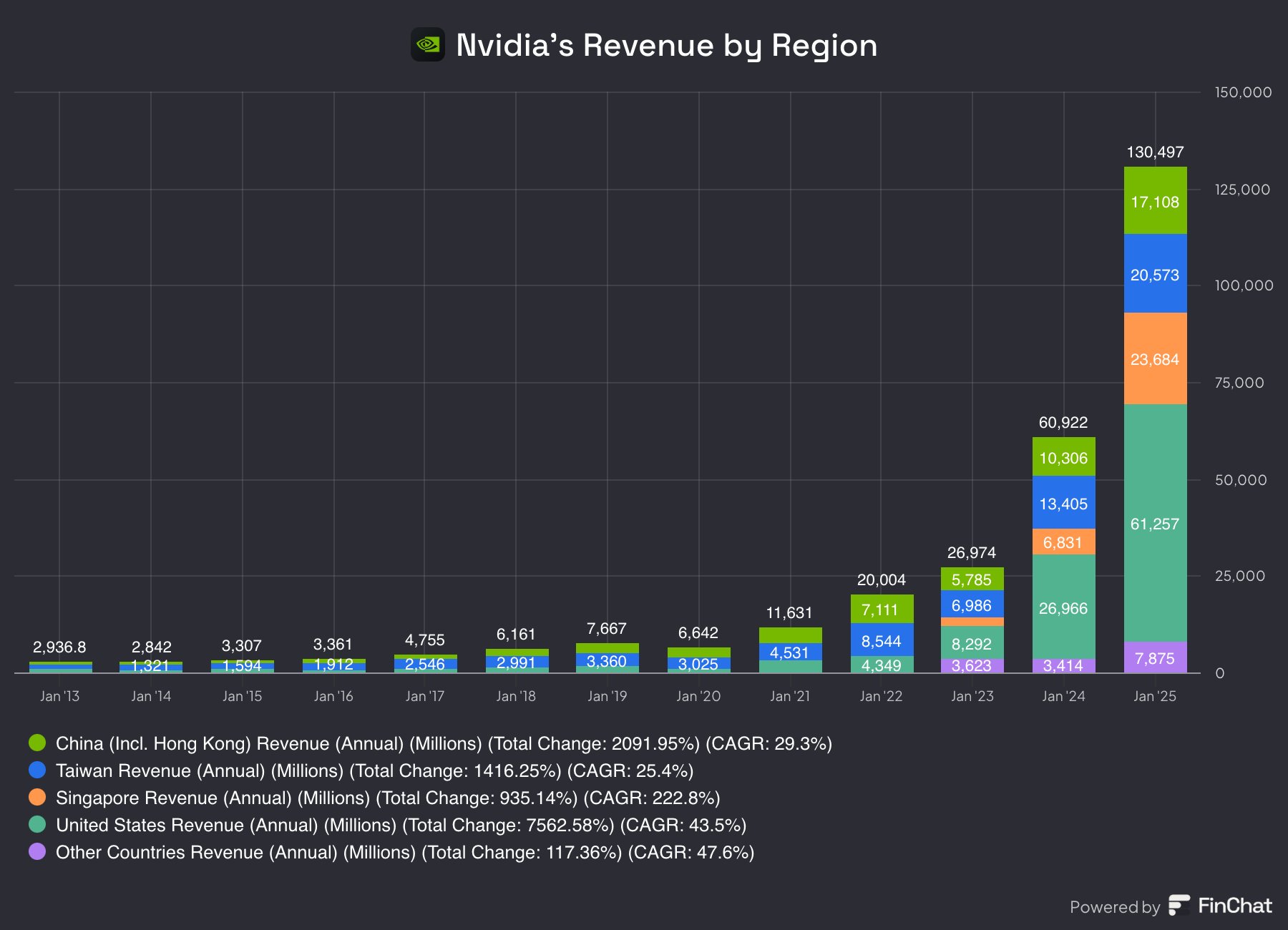Recent consumer sentiment readings have been horrendous. For instance, the University of Michigan’s latest consumer expectation s and the Conference Board’s consumer confidence index are at or near their lowest levels in ten years. However, despite poor sentiment and concerning outlooks, recent consumer spending reports show increased spending.
We, and many economists, believe this is a function of consumers frontrunning tariffs. If you think that tariffs will increase the price of goods appreciably, frontrunning, or buying more than you need, or in advance of a need, makes sense.
The latest Johnson Redbook weekly retail sales index argues consumers are frontrunning tariffs despite having historically poor sentiment. This odd divergence can be seen on the graph on the right. The Johnson Redbook index measures year-over-year same-store sales growth for a sample of large U.S. general merchandise retailers, covering about 9,000 stores.
Because the index is released weekly, it provides one of the most real-time indicators of consumer spending. The change in spending over the last two weeks is near its peak for the last few years. Further confirming the Johnson Redbook data was Wednesday’s Retail Sales data, showing the largest gain since January 2023. Motor vehicles, a likely candidate for tariff frontrunning, drove the strong spending.
Remember, the surge in spending today, especially that related to front-running tariffs, will result in less spending tomorrow as consumer needs are sated.

China Trade Restrictions Make NVDA Attractive
Nvidia shares (NASDAQ: NVDA ) were under pressure due to tariffs and trade-related restrictions. On Tuesday afternoon, they announced that the US government would indefinitely ban them from selling their H20 chips to China. Consequently, they are taking a substantial charge-off to first-quarter earnings. Per the company:
First quarter results are expected to include up to approximately $5.5 billion of charges associated with H20 products for inventory, purchase commitments, and related reserves.
The graph below shows that 10-15% of Nvidia’s revenue is from China. Losing Chinese revenue, even if temporary, will sting. But is the stock price already pricing in the bad news and not factoring in NVDA’s growth potential?
While we do not know the ultimate resolution regarding tariffs and trade restrictions, we do know NVDA is cheap.
Furthermore, NVDA is growing its earnings and revenues at many multiples of the market. Accordingly, NVDA has a PEG ratio of 1.15, less than half of the
S&P 500
. NVDA shares may stay under pressure for the foreseeable future, but they present investors with the rare opportunity to buy a value stock with high growth potential.


